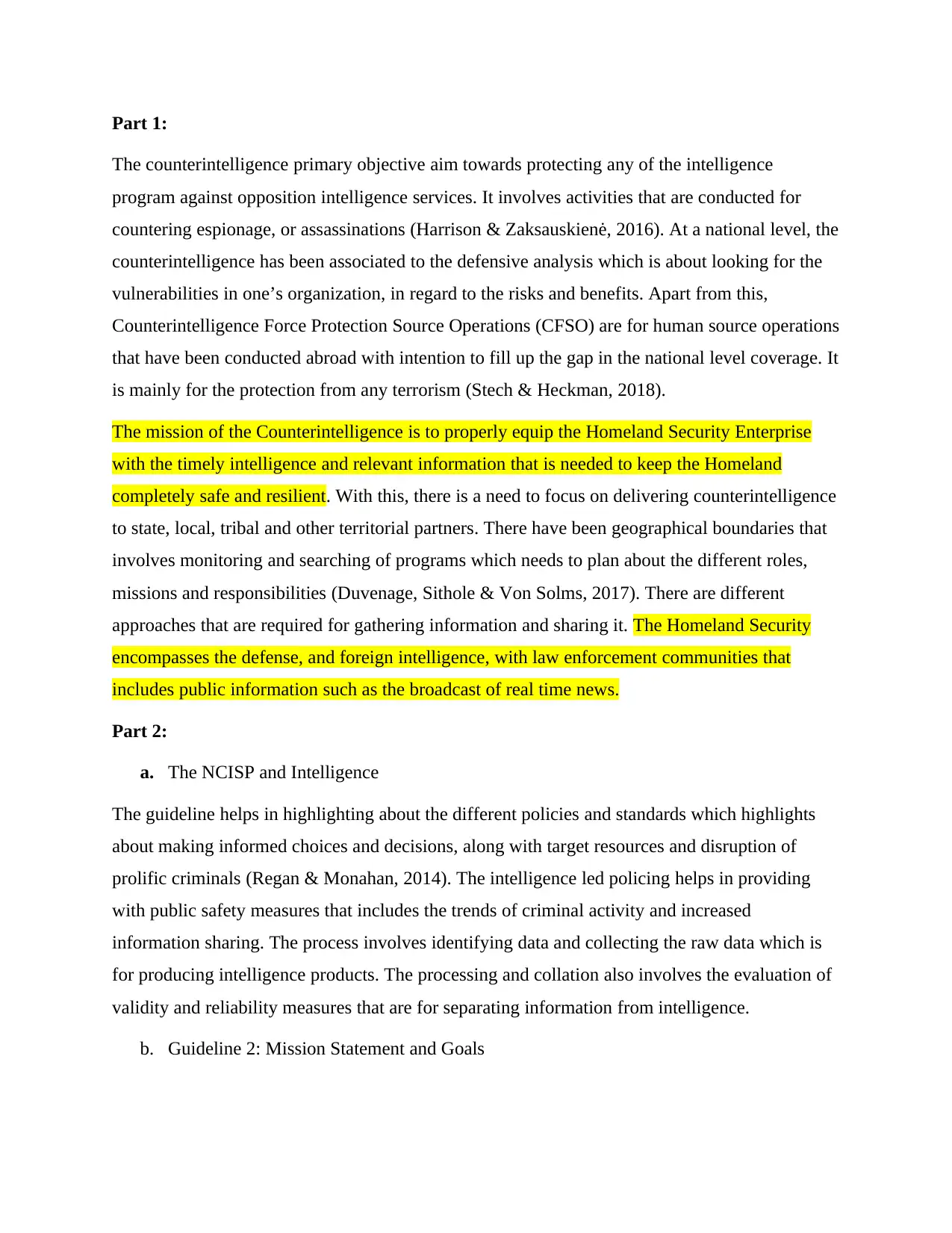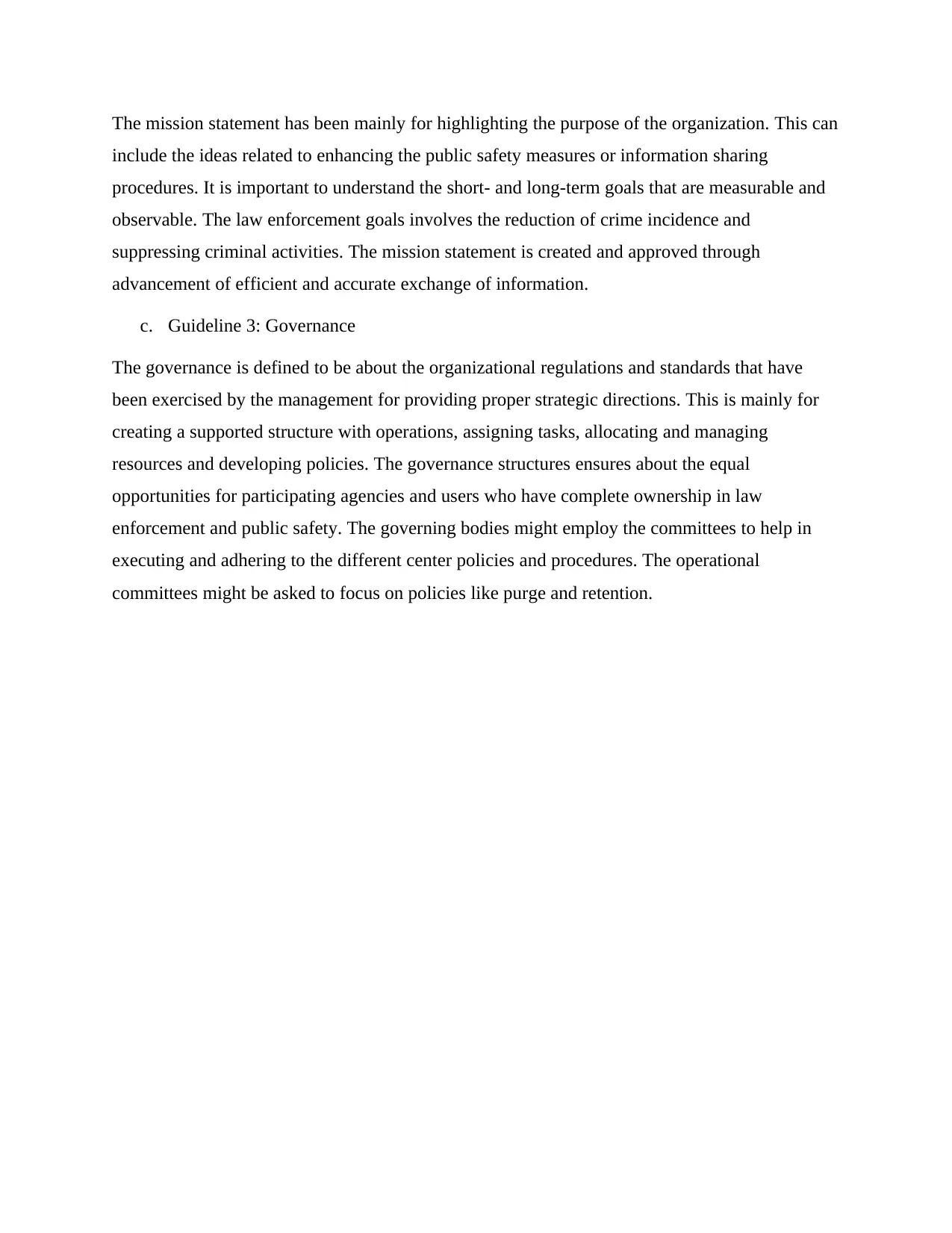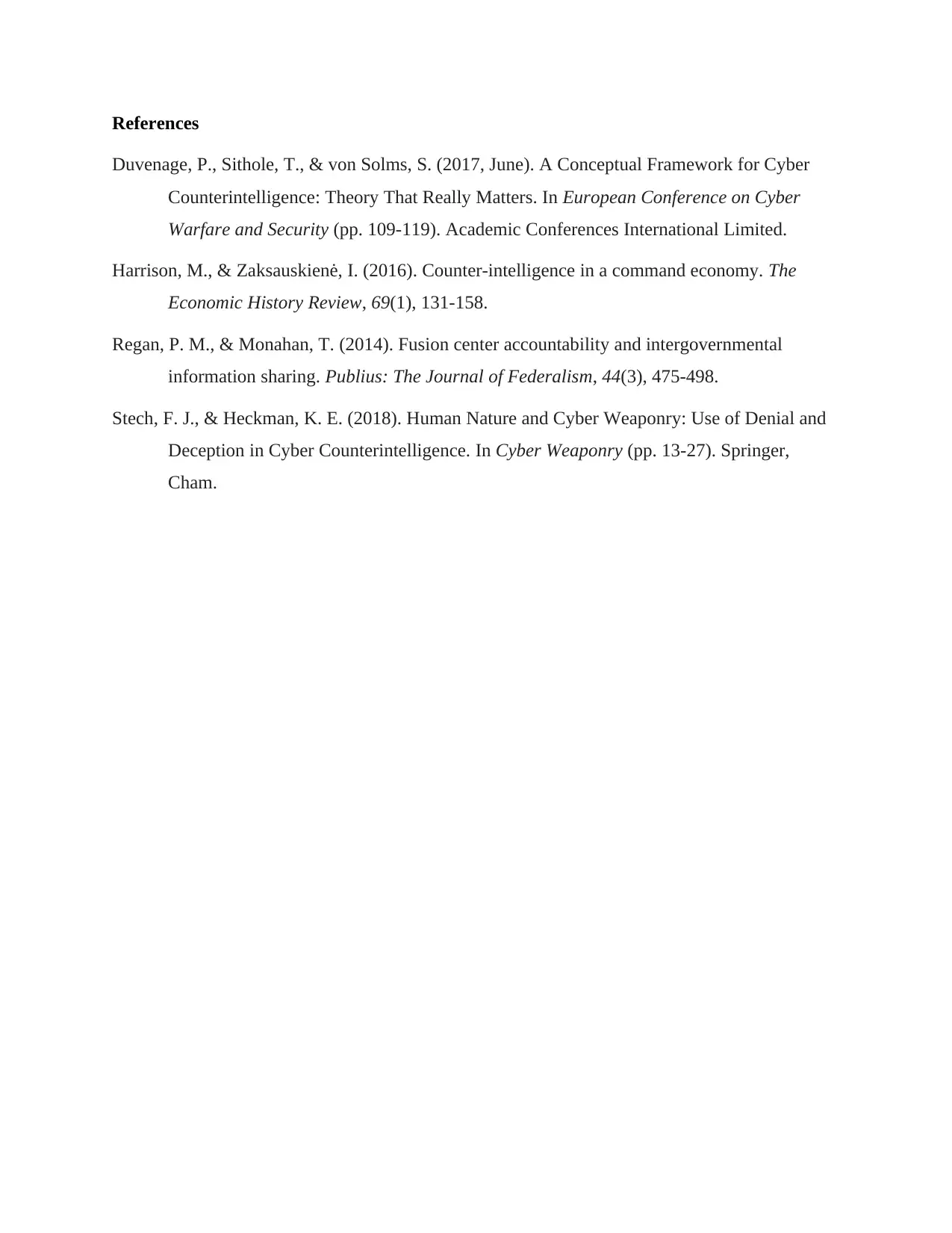Counterintelligence, NCISP, and Homeland Security: A Detailed Report
VerifiedAdded on 2022/11/17
|4
|722
|217
Report
AI Summary
This report provides an overview of counterintelligence, focusing on its primary objective of protecting intelligence programs. It examines the role of counterintelligence at a national level, including defensive analysis and Counterintelligence Force Protection Source Operations (CFSO). The report emphasizes the mission of counterintelligence in equipping Homeland Security with timely intelligence, with a focus on delivering information to state, local, tribal, and territorial partners. It then delves into the National Criminal Intelligence Sharing Plan (NCISP) and its guidelines, highlighting policies and standards for informed decision-making and disrupting criminal activities. The report further explores the mission statement and goals of organizations, particularly in law enforcement, including the reduction of crime. Finally, it discusses governance structures, organizational regulations, and standards for providing strategic direction, ensuring equal opportunities for participating agencies, and employing committees to execute policies. The report references several academic sources to support its analysis.
1 out of 4











![[object Object]](/_next/static/media/star-bottom.7253800d.svg)